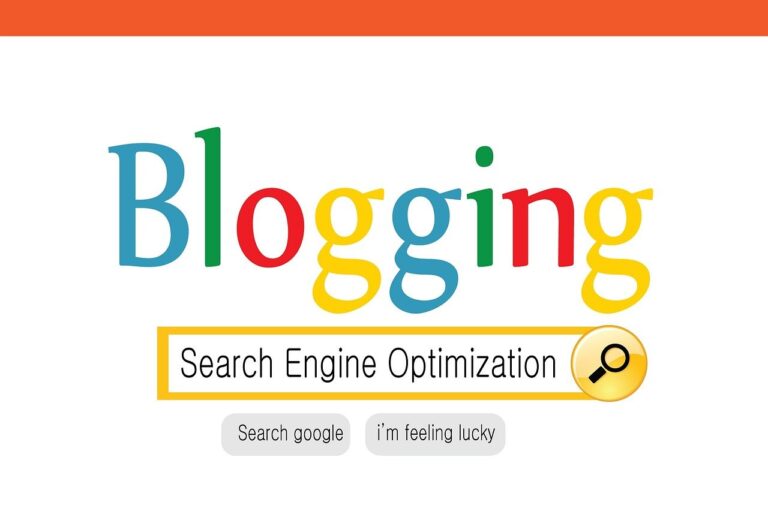As a holistic practitioner, having a strong online presence is crucial for attracting new clients and growing your practice. Most people turn to search engines like Google to find the services they need.
Implementing effective SEO strategies can increase the likelihood of your website appearing at the top of search results when potential clients are looking for holistic health services.

SEO, or Search Engine Optimization, encompasses a comprehensive approach to improving your website’s visibility and ranking. This includes optimizing various aspects such as technical elements, content, and user experience.
By focusing on these areas, you can enhance your website’s performance and attract more organic traffic.
Adopting a holistic SEO approach allows you to address all factors that influence your website’s search engine rankings. This includes on-page optimization, off-page factors, and technical SEO.
By mastering these concepts, you can stay ahead in the ever-evolving digital landscape and ensure your holistic practice reaches its target audience effectively.
Key Takeaways
- Implement effective SEO strategies to increase your website’s visibility in search results
- Focus on optimizing technical elements, content, and user experience for better performance
- Adopt a holistic SEO approach to address all factors influencing search engine rankings
Understanding SEO and Its Importance
Search engine optimization plays a crucial role in enhancing your online visibility. It helps holistic practitioners connect with potential clients seeking their services.
What Is SEO?
SEO stands for Search Engine Optimization. It’s the practice of optimizing your website and online content to improve its visibility on search engine results pages (SERPs).
SEO involves various strategies to make your site more attractive to search engines like Google. These include:
- Optimizing website structure and content
- Using relevant keywords
- Improving site speed and performance
- Creating high-quality, valuable content
- Building reputable backlinks
By implementing these techniques, you increase the chances of your website appearing higher in search results when potential clients look for holistic health services.
Why SEO Matters for Holistic Practitioners
As a holistic practitioner, SEO is essential for growing your online presence and attracting more clients. Holistic SEO helps you match search engine goals and meet their strict algorithms, leading to better rankings.
Effective SEO can:
- Increase your website’s visibility
- Drive more organic traffic to your site
- Establish your authority in the holistic health field
- Help you reach your target audience more effectively
By implementing SEO strategies, you can compete with larger practices and stand out in a crowded market. This approach allows you to connect with potential clients actively searching for the services you offer, leading to more qualified leads and better conversion rates.
Keyword Research for Holistic Practices
Effective keyword research is crucial for holistic practitioners to improve their online visibility. By identifying the right keywords, you can attract more potential clients to your website and grow your practice.
Identifying Relevant Keywords
Start by brainstorming terms related to your holistic practice. Think about the services you offer and the problems you solve for clients. Consider both broad and specific terms.
Make a list of your specialties, modalities, and target health conditions. Include location-based keywords if you serve a specific area.
Ask your current clients what terms they used to find you or similar services. This can provide valuable insights into the language potential clients use.
Review your competitors’ websites to see what keywords they’re targeting. This can help you identify gaps in your own keyword strategy.
Tools for Keyword Research
Several tools can help you conduct thorough keyword research for your holistic practice. Google Keyword Planner is a free tool that provides search volume data and keyword suggestions.
SEMrush and Ahrefs are paid tools that offer more advanced features. They can help you analyze competitor keywords and find long-tail keyword opportunities.
Use these tools to:
- Discover new keyword ideas
- Check search volumes
- Assess keyword difficulty
- Analyze competitor keywords
Remember to focus on keywords with a good balance of search volume and competition level.
Long-Tail Keywords and Their Benefits
Long-tail keywords are longer, more specific phrases that typically have lower search volumes but higher conversion rates. For holistic practitioners, these can be particularly valuable.
Examples of long-tail keywords:
- “holistic anxiety treatment in [your city]”
- “natural remedies for chronic back pain”
- “acupuncture for migraine relief”
Benefits of targeting long-tail keywords:
- Less competition
- Higher conversion rates
- More specific targeting of your ideal clients
Incorporating long-tail keywords into your website content can help you attract clients who are actively seeking your specific services. This can lead to more qualified leads and better client-practitioner matches.
On-Page Optimization Techniques
On-page optimization is crucial for improving your website’s visibility in search results. These techniques focus on optimizing individual web pages to rank higher and earn more relevant traffic.
Optimizing Title Tags and Meta Descriptions
Title tags and meta descriptions are vital for search engines and users. Craft compelling title tags that include your main keyword and accurately describe the page content. Keep titles under 60 characters to avoid truncation in search results.
For meta descriptions, aim for 150-160 characters. Include your primary keyword and a clear call-to-action. Write engaging descriptions that entice users to click through to your site.
Use unique title tags and meta descriptions for each page. Avoid duplicate content, as it can confuse search engines and diminish your ranking potential.
Effective Use of Headers and Subheaders
Headers help organize your content and make it more scannable for readers. Use H1 tags for your main title, and H2-H6 tags for subheadings.
Include relevant keywords in your headers, but keep them natural and reader-friendly. Don’t stuff keywords unnaturally.
Structure your content logically, using headers to break up long sections. This improves readability and helps search engines understand your content hierarchy.
Consider using questions in your subheaders to address common user queries. This can help your content appear in featured snippets.
Image Optimization for Better SEO
Optimize your images to improve page load speed and provide context to search engines. Use descriptive, keyword-rich file names for your images.
Add alt text to all images, describing what’s in the picture and including relevant keywords when appropriate. This helps visually impaired users and allows search engines to better understand your content.
Compress your images to reduce file size without sacrificing quality. This improves page load speed, which is a ranking factor for search engines.
Consider using responsive images that adapt to different screen sizes for a better mobile experience.
Internal Linking Strategies
Internal linking helps search engines understand your site structure and spreads link equity throughout your website. Link to relevant internal pages using descriptive anchor text.
Create a logical site structure with a clear hierarchy. This helps both users and search engines navigate your site more easily.
Use your most important keywords as anchor text for internal links, but keep it natural and varied. Avoid over-optimizing or using the same anchor text repeatedly.
Regularly audit your internal links to fix broken links and ensure a good user experience. Consider creating a site map to help search engines index your pages more efficiently.
Creating High-Quality Content

High-quality content is essential for attracting and engaging potential clients while improving your website’s search engine rankings. Focus on providing valuable, relevant information that addresses your audience’s needs and showcases your expertise as a holistic practitioner.
Content Ideas for Holistic Practitioners
Consider creating content that educates your audience about holistic health practices. Write articles on natural remedies, wellness tips, and holistic approaches to common health issues. Share success stories and case studies that demonstrate the effectiveness of your treatments.
Develop guides on meditation techniques, nutrition advice, and stress management strategies. Create infographics that explain complex holistic concepts in an easy-to-understand format. Produce video content showcasing your treatments or offering quick wellness tips.
Remember to address frequently asked questions about your services and holistic health in general. This can help establish your expertise and improve your chances of appearing in featured snippets on search engine results pages.
Writing for Your Audience and SEO
When creating content, strike a balance between catering to your audience’s needs and optimizing for search engines. Use keywords naturally throughout your content, focusing on terms your potential clients might use when searching for holistic health services.
Structure your content with clear headings and subheadings to improve readability. Use bullet points and short paragraphs to make your content more scannable. Include relevant internal and external links to provide additional value and context for your readers.
Incorporate local keywords if you have a physical practice. Mention your location and nearby areas to improve your visibility in local search results. Use alt text for images to make your content more accessible and SEO-friendly.
The Role of Blogging in SEO
Maintaining a regular blog is crucial for improving your website’s SEO. It allows you to consistently add fresh content to your site, which search engines favor. Blogs provide opportunities to target a wide range of keywords related to your holistic practice.
Use your blog to address common concerns and questions your clients have. This can help position you as an authority in your field. Share your blog posts on social media to increase engagement and drive traffic to your website.
Consider guest blogging on reputable health and wellness websites to build backlinks and expand your reach. Invite other experts to contribute to your blog, adding diverse perspectives and potentially attracting their followers to your site.
Local SEO Strategies

Implementing effective local SEO strategies can significantly boost your holistic practice’s online visibility and attract more local clients. By optimizing your online presence for local searches, you’ll make it easier for potential clients in your area to find and choose your services.
Importance of Local SEO for Holistic Practitioners
Local SEO is crucial for holistic practitioners as it helps you connect with nearby potential clients. When people search for holistic services in your area, you want your practice to appear at the top of the results.
Local SEO improves your visibility in location-based searches, making it more likely for local clients to find you. This targeted approach can lead to higher conversion rates, as people searching locally often have higher intent to book appointments.
By optimizing for local searches, you can compete more effectively with larger companies and franchises in your area. Local SEO also helps build trust and credibility within your community, as potential clients see you as a local expert in holistic practices.
Optimizing Your Google My Business Profile
Your Google My Business (GMB) profile is a cornerstone of local SEO. Claiming and optimizing your GMB listing is essential for improving your local search visibility.
Start by verifying your business and ensuring all information is accurate and up-to-date. Include your business name, address, phone number, and website URL. Choose the most specific category for your holistic practice.
Add high-quality photos of your practice, team, and services. Write a compelling business description that highlights your unique offerings and expertise.
Regularly post updates, special offers, and useful content to keep your profile active and engaging.
Enable the booking feature if applicable, making it easy for potential clients to schedule appointments directly from your GMB listing. Respond promptly to questions and reviews to show that you’re attentive and value client feedback.
Gathering and Managing Online Reviews
Online reviews play a crucial role in local SEO and client decision-making.
Encourage satisfied clients to leave reviews on your Google My Business profile and other relevant platforms.
Create a simple process for clients to leave reviews, such as sending follow-up emails with direct links to your review profiles.
Consider offering incentives, like small discounts on future services, to motivate clients to share their experiences.
Respond to all reviews, both positive and negative, in a professional and timely manner.
Thank clients for positive feedback and address any concerns raised in negative reviews constructively. This shows potential clients that you value feedback and are committed to client satisfaction.
Monitor your online reputation regularly using tools like Google Alerts or specialized reputation management software.
Address any inaccurate information or fake reviews promptly to maintain a positive online presence.
Technical SEO Fundamentals

Optimizing your website’s technical aspects is crucial for enhancing search engine visibility and user experience.
Focusing on mobile-friendliness, site speed, and schema markup implementation can significantly boost your holistic practice’s online presence.
Ensuring Mobile-Friendliness
Your website must perform well on mobile devices to meet modern user expectations and search engine requirements.
Start by using responsive design to ensure your site adapts to various screen sizes.
Test your site’s mobile-friendliness using Google’s Mobile-Friendly Test tool.
Optimize touchscreen navigation by making buttons and links easily tappable.
Ensure text is readable without zooming. Avoid using Flash or other technologies not supported on mobile devices.
Consider implementing Accelerated Mobile Pages (AMP) for faster loading on mobile networks.
AMP can improve user experience and potentially boost search rankings.
Improving Site Speed
Fast-loading websites provide better user experience and are favored by search engines.
Begin by optimizing your site’s speed through image compression and proper formatting.
Use tools like GTmetrix or Google PageSpeed Insights to identify areas for improvement.
Minimize HTTP requests by combining files where possible.
Enable browser caching to store static files on users’ devices.
Consider using a Content Delivery Network (CDN) to serve assets from servers closer to users’ geographic locations.
Optimize your code by minifying CSS, JavaScript, and HTML.
Remove unnecessary comments, formatting, and unused code.
Upgrade your hosting plan if needed to ensure adequate server response times.
Understanding and Implementing Schema Markup
Schema markup helps search engines better understand your website’s content, potentially improving your search result appearance.
Start by identifying relevant schema types for your holistic practice, such as LocalBusiness, MedicalOrganization, or HealthAndBeautyBusiness.
Use schema markup to highlight key information like your practice’s name, address, phone number, and services offered.
Implement review schema to showcase positive client feedback in search results.
Test your schema implementation using Google’s Structured Data Testing Tool.
Consider using JSON-LD format for easier implementation and maintenance.
Regularly update your schema markup to reflect any changes in your practice or services.
Monitoring and Measuring SEO Success

Tracking your SEO performance is crucial for understanding what’s working and where improvements are needed.
Regular monitoring allows you to make data-driven decisions to enhance your website’s visibility and attract more potential clients.
Tools for Tracking SEO Performance
Several powerful tools can help you monitor your SEO efforts.
Google Analytics provides comprehensive insights into your website traffic and user behavior. It shows you where your visitors come from and how they interact with your site.
Google Search Console is another essential tool. It offers data on your search performance, including impressions, clicks, and average position for specific keywords.
SEMrush and Ahrefs are paid tools that offer in-depth keyword tracking, backlink analysis, and competitor research. These can be valuable for more advanced SEO strategies.
For local SEO, consider using tools like Moz Local or BrightLocal to monitor your local search rankings and manage your online listings.
Key Metrics to Monitor
Organic traffic is a crucial metric to track. It shows how many visitors are finding your site through search engines. An increase in organic traffic often indicates successful SEO efforts.
Keyword rankings are important to monitor. Track how your target keywords are performing in search results. Aim for positions on the first page, ideally in the top 3 results.
Bounce rate and time on site can indicate how engaging your content is. A low bounce rate and higher time on site suggest that visitors find your content valuable.
Conversion rate is vital for holistic practitioners. Track how many visitors take desired actions, such as booking appointments or signing up for newsletters.
Adjusting Strategies Based on Analytics
Regularly review your analytics to identify trends and areas for improvement.
If certain pages have high bounce rates, consider revising the content or improving the user experience.
Pay attention to which keywords are driving the most traffic and conversions.
Focus on optimizing for these high-performing keywords and look for related terms to target.
Use the data to inform your content strategy. If specific topics or types of content consistently perform well, create more similar content to capitalize on this success.
Monitor your backlink profile and look for opportunities to gain quality links from reputable health and wellness websites.
This can significantly boost your domain authority and search rankings.
Frequently Asked Questions

Holistic practitioners often have questions about optimizing their websites for better visibility. These common inquiries cover key aspects of SEO strategy, from foundational elements to measuring success.
What are the foundational elements of SEO for holistic wellness websites?
The foundational elements of SEO for holistic wellness websites include optimizing your site structure, creating high-quality content, and ensuring your site is mobile-friendly.
You should also focus on improving page load speed and implementing proper meta tags.
Secure your website with HTTPS to build trust with visitors and search engines. Use descriptive URLs that include relevant keywords for your holistic practice.
How can on-page SEO techniques improve the online presence of holistic practitioners?
On-page SEO techniques can significantly enhance your online presence.
Start by optimizing your title tags and meta descriptions with relevant keywords for your holistic services.
Use header tags (H1, H2, H3) to structure your content logically. Include alt text for images to improve accessibility and provide context for search engines.
What role do keywords play in optimizing a holistic wellness site?
Keywords are crucial for optimizing your holistic wellness site.
They help search engines understand your content and connect you with potential clients searching for your services.
Conduct thorough keyword research to identify terms your target audience uses.
Incorporate these keywords naturally into your content, headings, and meta tags.
How does content marketing affect SEO for holistic health providers?
Content marketing plays a vital role in SEO for holistic health providers.
By creating valuable, informative content, you can establish your expertise and attract more visitors to your site.
Regularly publish blog posts, articles, or videos addressing common questions and concerns in holistic health.
This fresh content keeps your site relevant and provides opportunities to target new keywords.
What are the best practices for link building for holistic health websites?
Link building is essential for improving your site’s authority.
Focus on obtaining high-quality backlinks from reputable health and wellness websites.
Consider guest posting on related blogs or collaborating with other holistic practitioners.
Create shareable content that naturally attracts links from other sites in your industry.
How can holistic practitioners measure the success of their SEO efforts?
To measure the success of your SEO efforts, use tools like Google Analytics and Google Search Console.
Track key metrics such as organic traffic, keyword rankings, and conversion rates.
Monitor your site’s performance over time and adjust your strategy as needed.
Pay attention to which pages and content types are performing best to inform future optimization efforts.






